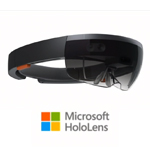
As the technology world advances, more things are seen differently. Products coming from technology companies have long promised to bring people to the future.
One of which Microsoft is trying to prove when the company announced HoloLens for people to see the world "differently". Hollywood's science-fiction has brought people into dreams, thinking of what the world would be in the upcoming years, and how technology can aid humans to do certain tasks.
Companies like Google with Glass and Cardboard, Facebook with Oculus VR, and now Microsoft, all are trying to move those fiction toward reality, and the public is beginning to see those visions of tomorrow take form.
What makes HoloLens differ from other reality-altering devices?
Microsoft's HoloLens that was unveiled at its Redmond, Washington headquarters in January 21th, 2015, is a sleek, futuristic headset with transparent lenses. By using the device, the user can see the world, just like normal, but transformed with 3D objects, like holograms, floating in midair which only the wearer can see.
HoloLens is Microsoft's way into the virtual reality market. With the device, Microsoft isn't trying to create a world full of illusions and digital manifestation, but its trying to bring computers into the users' vision by overlaying images and objects into what's visible to the wearer.

A New Interaction With Reality
Microsoft's HoloLens looks like an oversized glasses. The wearer can see the world as it is. But when it's powered on, the device tracks the wearer's movements with arrays of sensors, and use this information to create images with the help of the layered and colored glass.
Users can then interact with the corresponding 3D objects by using hand gestures.
The device also have a camera that looks at what's in front of the wearer, so it can see where tables, chairs and other objects are. It then uses that information to project 3D images on top of and even inside them. And to add the experience of virtual reality, the goggles are wireless and equipped with speakers that play "spacial" sound, so a noise might seem like it's coming from behind or beside the wearer.
HoloLens users can also let other people see through their eyes. Demonstration scenarios below is to show some real examples of practical uses for the technology.
- Video games: As a demo, Microsoft's Minecraft projected into the real world. The limit can be limitless as HoloLens can create more things into the wearer's eyes.
- Customer service: For along time, interactions between a customer and a customer service representative are mostly limited to conversations. With the technology, customer service can see what troubles the customer on the other end.
- Designing app: The device is supported by HoloStudio, a creative app where anyone can create simple shapes to complex 3D models.
- Virtual reality: Just like other augmented-reality devices, HoloLens can project new landscape over the existing real world. So the wearer can feel that he/she is in a different place.
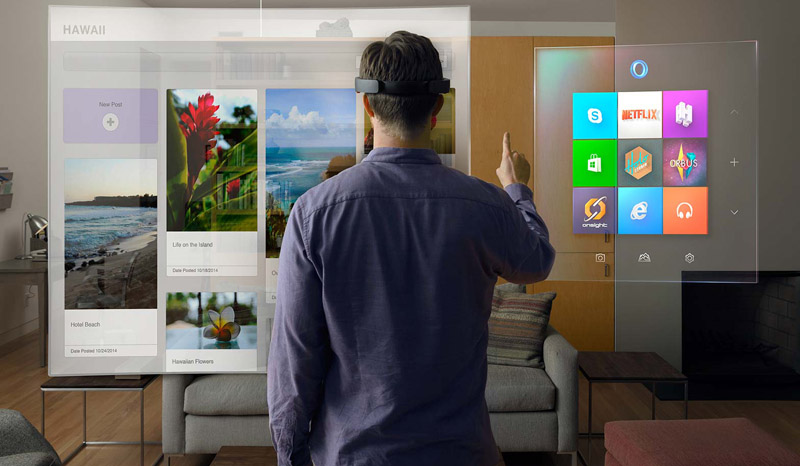
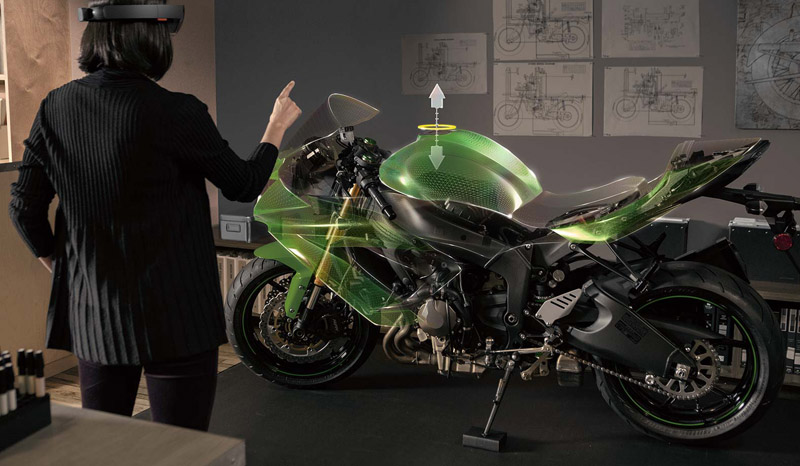
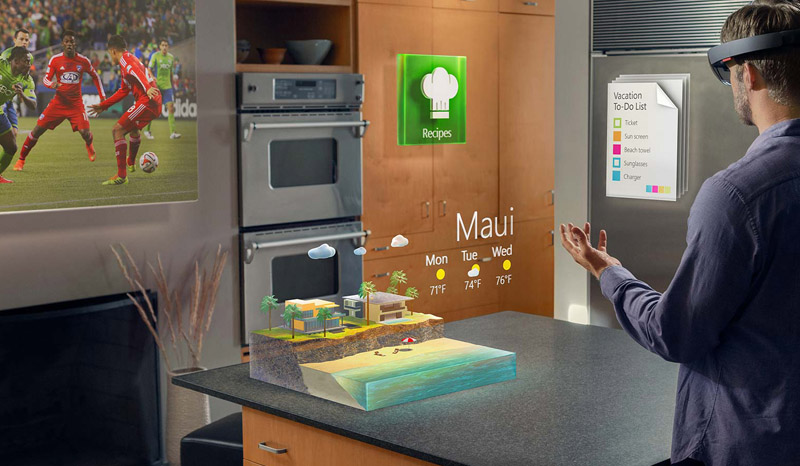
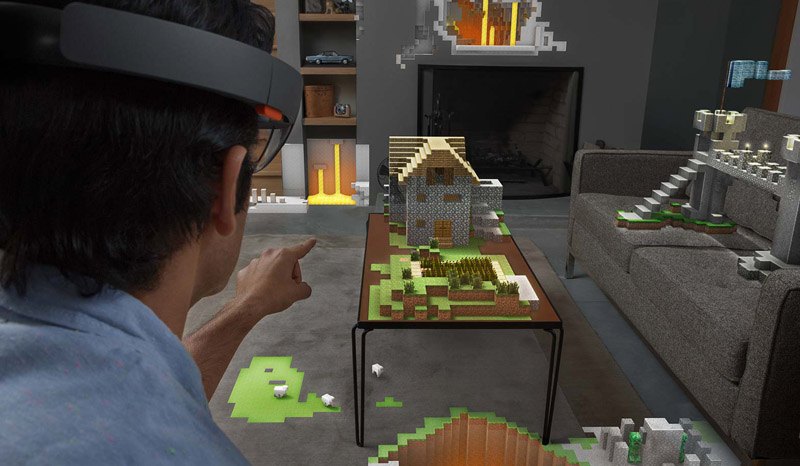
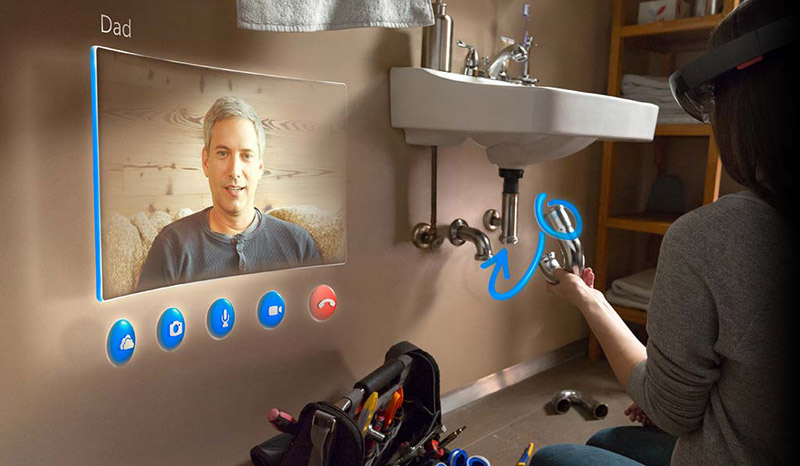
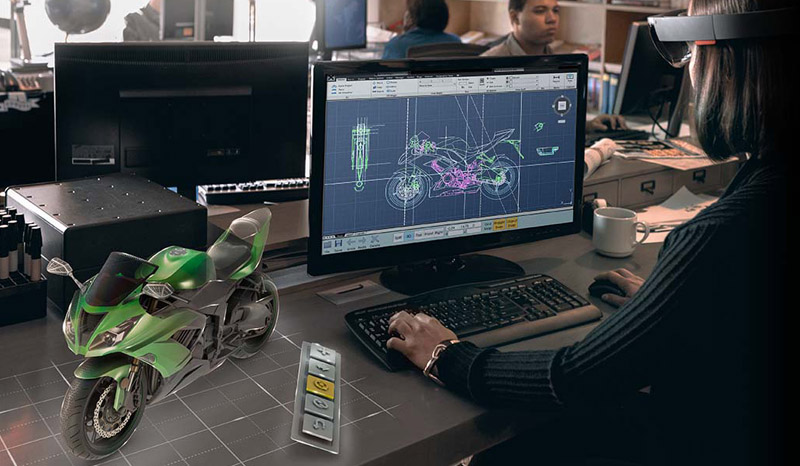
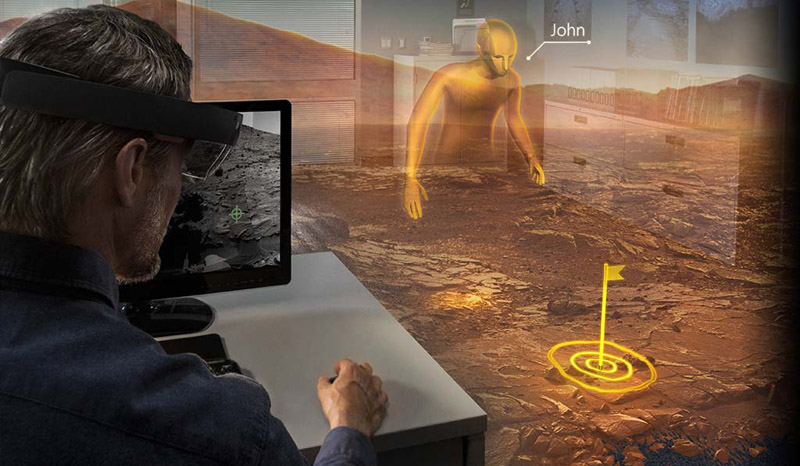
The Differences Between a Full and Partial Virtual Reality
What makes HoloLens different from Oculus Rift?
From the looks, both device is pretty similar since both are meant to be worn on the head. That's where the similarities end. HoloLens is trying to help people in interacting with the world in a new way, while Oculus VR that was acquired by Facebook in March 2014, is trying to creating an entirely new world.
Oculus creates images to make the wearer feel that he/she is in a totally different place. The goal for Oculus is to trick the user into believing they're actually there by completely blocking out the outside (real) world to fully immerse the wearer in another reality.
That feeling is called "presence," an ambition Microsoft's HoloLens isn't trying to do
Full (Oculus) and partial virtual reality (HoloLens and Glass) look different because of the underlying technology. Both HoloLens and Glass don't display images on any screen, but projects light directly onto the retina, imitating the way light travels from real objects. Oculus Rift on the other hand, is showing its images on a screen in front of the eyes and extends further out and around for a more encompassing view.
Conclusion
People have long used mouse and keyboards to interact with computers. Then technology developed and people started to interact with touchscreens. Amazon is one of earliest tech company that blends touchscreen with 3D perspective images with its Fire Phone smartphones.
Tech companies, despite aiming for a singular target, approaches it in a different manner.
They are all trying to invent new ways where people can interact with computers. They are trying to figure out more potential and more natural way to interact with technology.
These companies are making an alternate reality is the next-generation tools for productivity, communication and everything else. Microsoft's HoloLens indicates a lot of potentials. The company said that it can transform business and open up new possibilities on how people interact with objects.
Despite all those devices sounds like science fiction, but if they do work as intended, dreams that once were only on TV screens may come to reality sooner than we think.